Eco-veneered doors: pros and cons
What just does not use a man in the pursuit of fame? Take, for example, ordinary door - an element of the interior with a simple and clear function - this is what many, but not all, think, and certainly not those who created the door worth $ 34,000, not those who believe that a safe door should weigh at least 44 tons, and not those who, for the sake of safety, are ready to wait 45 minutes until all mechanisms open on the canvas and it opens.
Yes, that just people will not come up with to stand out. As for the typical layman - we choose the best in terms of convenience, safety and beauty. Considering that each of us has different opinions about the beautiful, as well as different opportunities, the doors in our apartments are not the same. Give one to naturalness, exoticism and massif, to another - the same beauty, but for less money, and, as an option, interior doors from eco-veneer.
The material belongs to the group of polypropylenes, has its advantages, is not without minuses, but remains one of the most common in the manufacture of doors. One of the disadvantages of eco-veneer lies in the name. Many people know what veneer is, but some people hear the term with the prefix “eco” for the first time. We decided to fill the knowledge gap and suggest that together with the consultants of the house door interior store consultants, what is eco-veneer, what are its advantages, how does it differ from the more usual PVC and should it be compared with natural veneer?
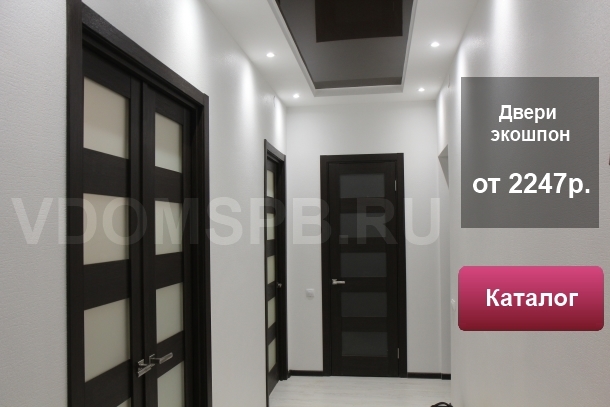
What are doors eco-veneer
An eco-veneer is on the agenda. First, let's imagine what the cutaway models look like. This design is multilayer, where:
- Basis - solid pine or glued beam of high strength;
- Upholstery - MDF panels;
- Decorative finish - eco-veneer.
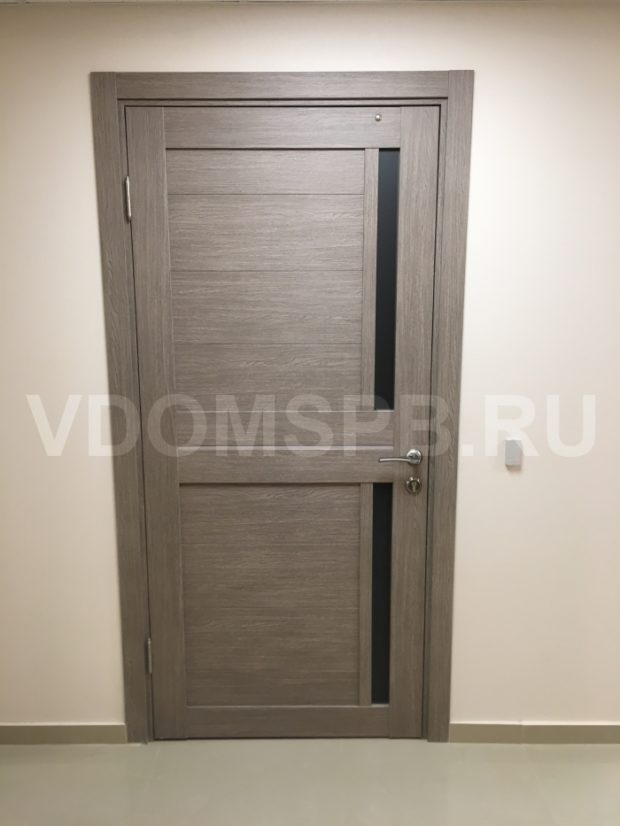

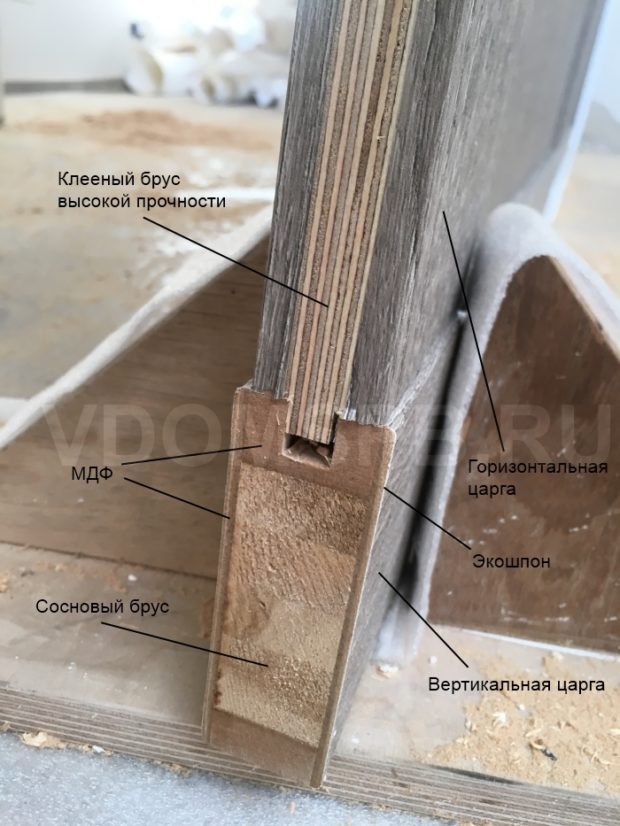
Almost all doors with eco-veneer coating are colleges. 4 drawers (2 horizontal and 2 vertical) form a strong frame, which is filled with MDF inserts or glass, depending on the design of the model.
Why do doors from eco-veneer do not fade under the bright sun?
In the finished form, the finishing material is a film, the same as PVC or other rolled analogues. Why, then, is the word “veneer” in the title?
The fact is that wood is used here as raw material, or rather, the most “waste waste” left after woodworking. They are mixed, and after several times, layer by layer, subjected to pressing. The result is a thin film with a raised surface.
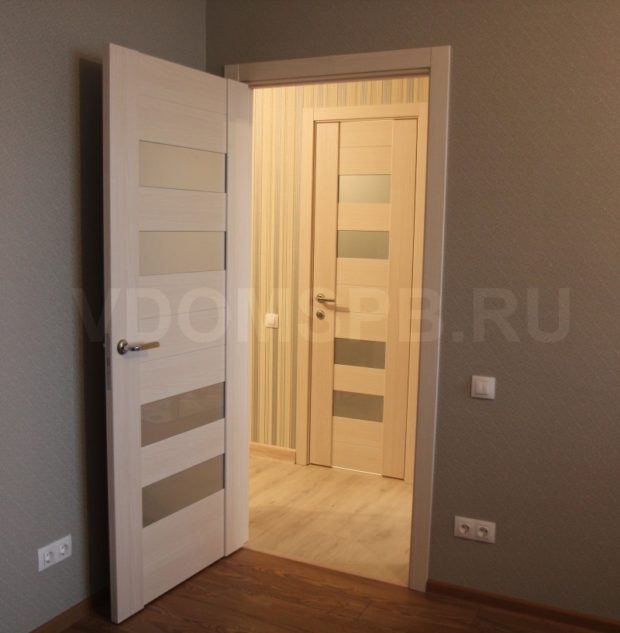
Yes, with regard to color - the coloring of the material is not done with a brush on the surface, but in bulk.Before the substance is sent under the press, it is thoroughly mixed with the addition of dye. Then an adhesive polymer is poured here. The technology allows to obtain a material with a homogeneous structure. Different shades on the inside and outside of the model are excluded. For absolutely any color and desired relief, exactly imitating all types of woodup to oak and exotic wenge, a huge collection of dyes is used.
We saw the abbreviation in the model description CPL - it means that you still have the same ecointerline interval. Apparently, these doors are made abroad, and they have their own designations. Please note that materials with a very low cost are put into production, therefore, cute doors made of eco-veneer can not be expensive.
“Eco” - means safer than natural veneer?
Yes, you could say that. Nevertheless, the point is, of course, relative, because in this case it is necessary to compare not the materials themselves - veneer and eco-veneer, but the compositions with which they are attached to the canvas.
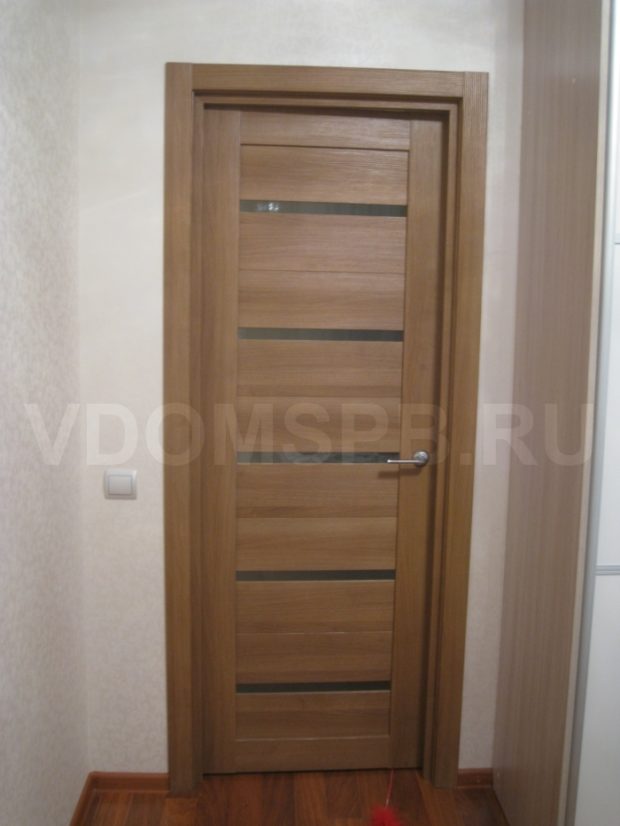
To stick natural veneer to the surface, use glue. It is good if the manufacturer takes a responsible approach to the choice of consumables. And if not, then at least a persistent chemical smell and toxic fumes are provided to you. In the case of eco-veneers, you do not run the risk of getting into such troubles, because in this case both the film itself and the MDF have sufficient adhesion and adhere to each other without the help of connecting intermediaries.
Eco-veneers are bought if you need inexpensively, but on the damage of the array
All right. Actually, this class of interior doors was created with the aim of making spectacular, modern, stylish models, exactly repeating the relief structure of natural wood, more affordable. The surface of the eco-veneer gives the same tactile sensations as when you touch the wood. Add great design, a great many options, colors, styles, compatibility with all types of fittings - and all this is several times cheaper than absolutely the same doors of the elite class.

Pros and cons - what will win?

Eco-veneered interior doors meet in all directions of classifications by styles, colors, types. The film is plastic, easily bends and is used to decorate embossed surfaces. This opens up new possibilities for design. Canvases clad in eco-veneer in oak, mahogany, ash, with two panels and an even crossbar in the middle - a common option for a classic living room. For dark rooms, you can choose doors with glass and trim from a light eco-veneer. Want more elegant - order glass with an ornament.
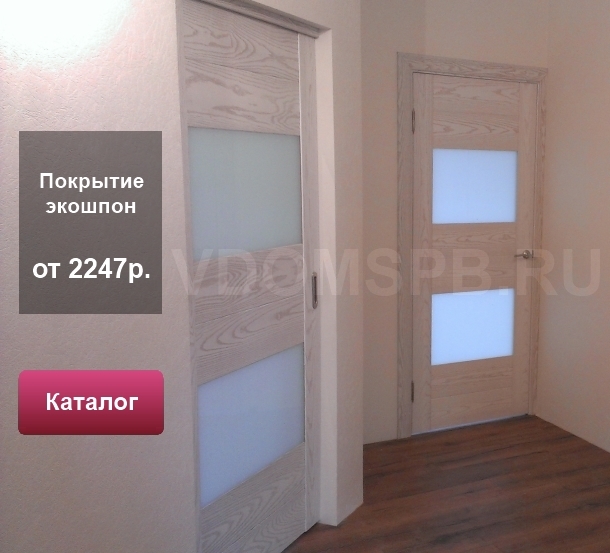
Look at what element in the room you would like to combine the door with: the range of inexpensive models is one of the most diverse, so you can choose a product for parquet, skirting boards, furniture facades.
How to choose a door from an ecointerline interval - we analyze it using concrete examples
Interior doors made of eco-veneer can be called leaders in the price segment up to 7,000 rubles. To prove this, let's see what is in opposition:
- Natural veneer: undoubtedly, synthetics (in our case, semi-synthetics) can never compete with natural materials, and in this regard, natural veneer wins, but the price of such doors starts where the cost of eco-veneered models ends. It turns out that most of the natural veneered products remain “behind the scenes”;
- PVC: they have absolutely equal cost indicators. They are on the same level as design options and types of designs. The difference lies in the characteristics of the finishing material: PVC - pure synthetics with a very controversial opinion regarding safety. Ecointerline - half synthetics. It is based on the same wood, albeit in the form of waste, plus a bonding polymer and a more gentle MDF gluing technology;
- Laminated: with equal performance, the price lags significantly in terms of strength and design options;
- Inexpensive array: in fact, pine is already at the heart of the doors from the eco-veneer. If it makes sense to compare models from eco-veneer, then only with pine products without a topcoat: the former have much more possibilities for use, and the scope of the latter is often limited to suburban interiors, cottages, baths and saunas. At least in modern city apartments a pine is not installed without decoration. From other rocks of the massif, doors are more expensive than 7,000 rubles, which means they do not fit into the comparison parameters we set.
So, interior doors from eco-veneer - are really leading in the sector of inexpensive doors. Let's look at what they look like, for which interiors they are suitable, with what styles they are combined.
Shield panels with a flat surface - the easiest and cheapest option
Their feature is precisely in the absence of those very features. Yes, and such canvases have a right to exist - well, not everyone can be aesthetics and strive for sophistication - some lead a rather ascetic lifestyle and reject everything that is devoid of functionality.
The beauty of the panel door is in the texture of the eco-veneer. We have already said that with its help it is possible to recreate the structure of any tree, and this cannot look mediocre. Option is suitable for style interiors modern classics, minimalism, partly - loft, modern. Such can be installed in any room, choosing the appropriate color. Perhaps you should abandon them in the hallway, since there is always not enough light and doors with glasses will become a more acceptable option.
Well, the commercial sphere includes offices, administrative buildings, doctors' offices in polyclinics, various institutions and other buildings where practicality and a low price are welcomed.
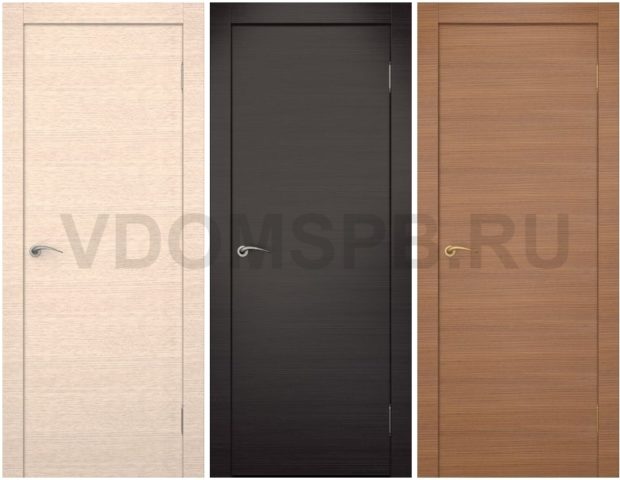
How to choose the right one? These tips are universal and suitable for all types of doors. Pay attention to the following criteria:
- On the style in the interior;
- On the colors in the room: usually the doors are selected under the floor, skirting boards, furniture, accessories. Since there are no decorative elements in our version, look for matching in color and texture;
- To fittings: metal handles will seem to be completely tasteless if the furniture handles, picture frames are covered with a gilded coating or made in bronze.
Smooth with the addition of metal moldings
In such constructions, the same rigor is expressed, but with a slight addition. On the surface of the canvas there are thin metal moldings. They can be arranged vertically and horizontally. Common Options:
- Dividing the canvas into several segments of the same width;
- Two horizontal moldings in the center. Two parallel lines at the handle level;
- One vertical molding - from bottom to top, separating the first third of the canvas;
- One horizontal molding serving as an extension of the door handle.

The colors of the moldings are selected to match the color of the eco-veneer: metal inserts look good on dark and light surfaces. Golden decor is more suitable for paintings in brown-red-red colors. Their rigor is appropriate in classic, Scandinavian interiors. Indoors in Provence style, country, they can also be used if the coating material has a pronounced woody pattern and is presented in a light palette of colors, for example, under bleached oak.
Flat with flush-mounted glass
All of the following models already have a broader artistic meaning. Eco-veneered doors often use glass, and different installation methods are used. Looks nice glass, flush glued. This means that the glass surface and the side panels of MDF are on the same level.
The model also comes in a wide range of colors. You can achieve the maximum design effect by choosing the right color glass.White, pastel, brown doors are combined with light and black glasses. To make a black door spectacular, a dark insert framed by light moldings, which give the structure a strict outline, is suitable. Glass can be installed in a completely unexpected way - horizontally, vertically, on a large surface of the canvas, in the form of a narrow strip, one or more small inserts.

For interiors: classic, office. Choose the color of the glasses for other glass surfaces in the room.
Flat with aluminum edge
Outwardly, these are all the same panel doors, models with moldings and glass flush, but they have one feature - the end part, which adjoins the box and remains invisible, is made of aluminum. Designs win in strength because they are not afraid of strong impacts and abrasion during long-term operation.
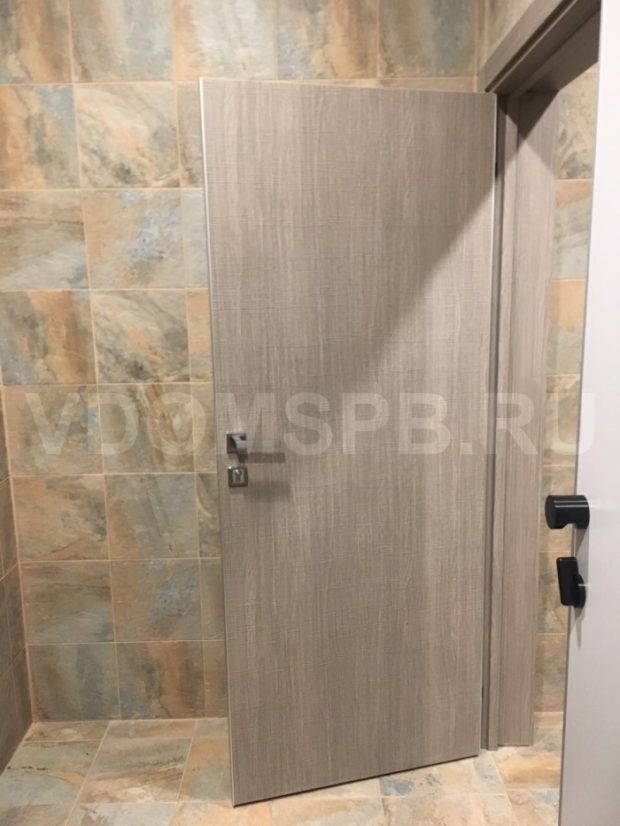
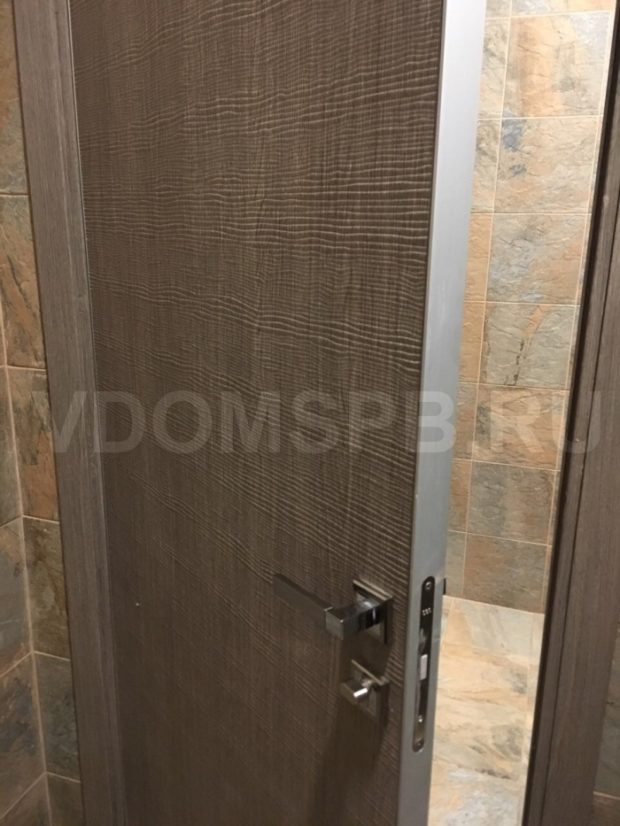

Models with aluminum ends, as a rule, last 5 years longer, especially if they are delivered in the factory version with hidden hinges. The fact that this is a new trend in the production of interior doors is evidenced by the improved design of the paintings, which are covered with an eco-veneer with a vertical or horizontal arrangement of wood fibers, and the pattern is so pronounced that it has a 3D volume effect.
Such a door can be bought in all of the previously listed options - deaf, with modling, glass. Suitable for modern classic interiors, minimalism, modern.
Moldings
Consist of two parts:
- Moldings - lateral load-bearing elements from an inexpensive array and MDF;
- Inner glass insert.
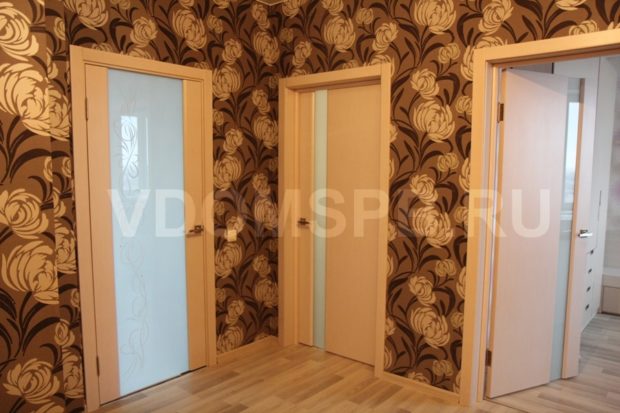
There are with a usual wooden or aluminum edge. These models fit the description of doors with a glass insert flush. Doors with a large glazing area have high light transmittance, so they are an acceptable option for installation in rooms where there are no windows - this is access to the basement, entrance hall, hall, bathroom.
Drawbars are the most common eco-veneer models.
Do not be fooled by the strange name of the structure. You, of course, have already met such models many times. Externally, they are a frame with several vertical or horizontal inserts (drawbars). This forms a beautiful frame frame. The design, elegant in appearance, actually has high rigidity, because the thickness of the inserts is greater than that of panels. Strength is also provided by their large number with a relatively small area.
Changing the size, location, color of the inserts, as well as using additional glass, moldings, you can get a huge number of interior door designs, for example:
- With transverse inserts

- With vertical inserts


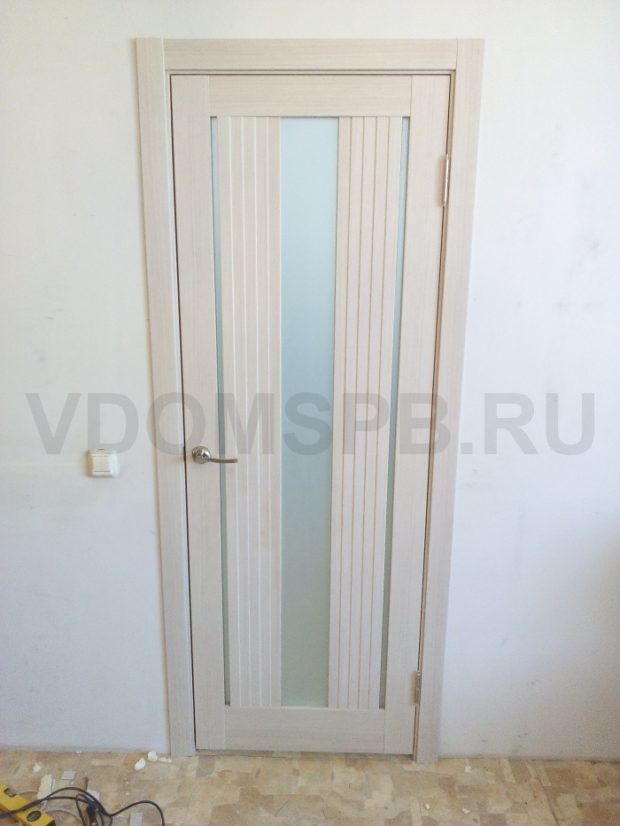
- With a combination of transverse and vertical inserts
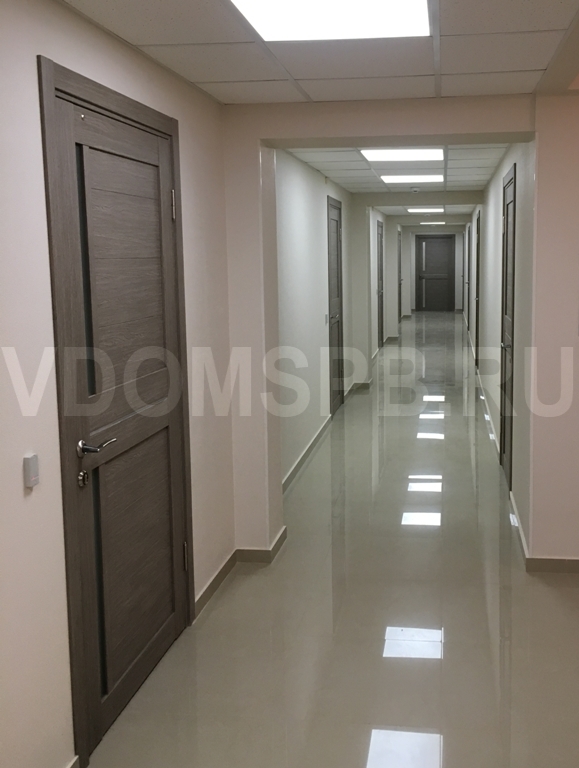
- Imitation of classic paneled constructions
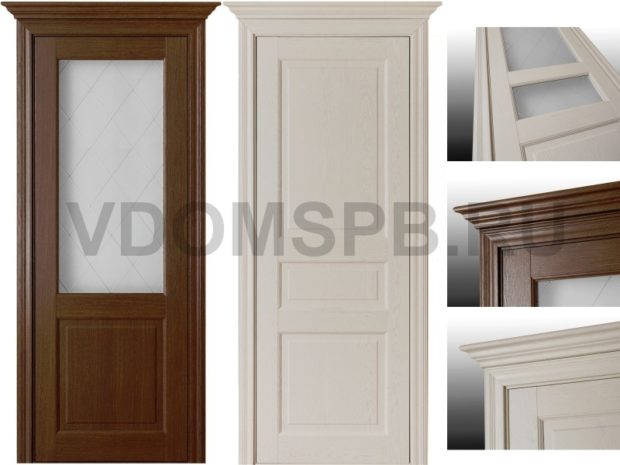
- Glass and MDF inserts
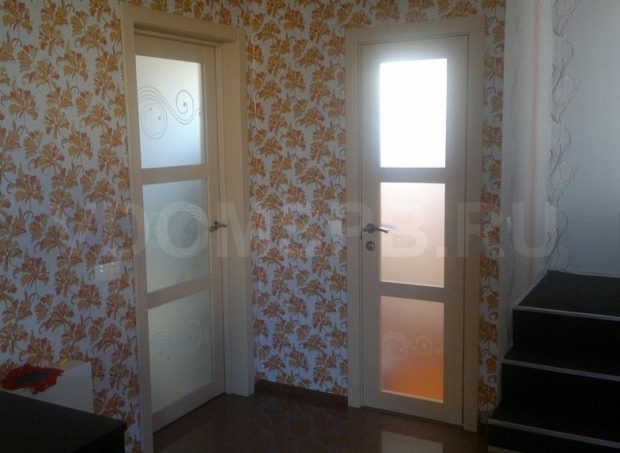
Of course, in the category of king doors you can find absolutely any solution for use in modern and classic styles, for choosing colors in unison with the floor, furniture facades. With their help, you can adjust the amount of natural light, if you choose models with glasses, or try to form a strict style of your office, if you take an imitation of panels and eco-veneer for oak, ash, wenge, mahogany.
It remains to learn how to choose the right accessories and the way to open, and we will talk about this further.
Types of installation and necessary fittings
There are at least 5 common options for interior doors, taking into account the type of opening. You ask why little is known about them? Yes, because the swing structure is the one that hangs on the hinges and opens on or from itself - it is familiar to our person. Many do not even consider other ways of opening, including, because they believe that everything that does not open up is new-fangled little things of dubious quality. Alas, it’s difficult to budge our person — but we will try.
To begin with, consider the main thing - any design was created for a reason. Apparently, at a certain period of life, people began to understand that the swinging nature of opening is not optimal in all situations, which means that each model has its own characteristic area of use. And the point is not so much in “like-dislike”, but in the ability of each design to better implement the embedded functionality in a particular post.
So, swing doors are the most common category. Let's start with them. We suggest talking about which installation methods, extras, hardware are most likely used with interior doors made of eco-veneer.
You cannot forbid comfortable living ... why do people not want to abandon good old swing doors?
It so happened that it would be more convenient to operate the interior doors if they open inside the room - “on your own”. But on which side to hang the loop - it depends on the location of adjacent walls, on the presence nearby windows, other doors etc. Having chosen the optimal location, we begin to study the types of loops, handles and additional elements.
Door hinges
Consider the existing options for door hinges in terms of reliability and price.
The cheapest hinges do not crash, but simply screw onto the surface. So called Butterflies they may be suitable for light and cheap eco-veneered doors, but they are not reliable, because they do not provide stability and rigidity to the door leaf due to the installation. Perhaps the only ones who win when choosing such loops are the installers: they are hung on screws, and spend on the entire operation no more than half an hour.
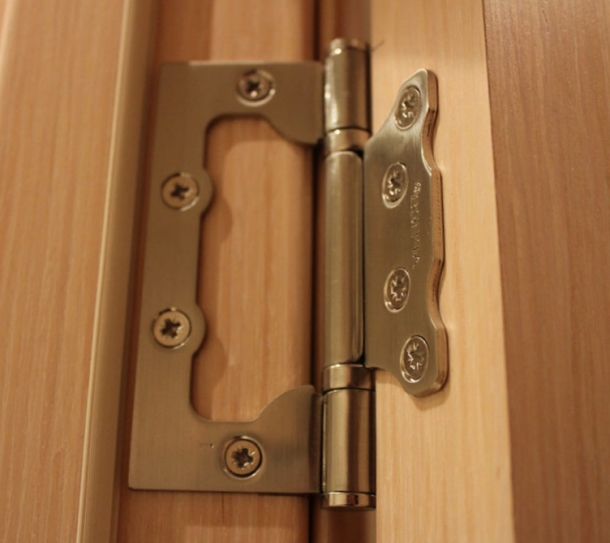
At the second level in cost are invoices (card) loops. Made from brass and steel. One half is attached to the box, and the second to the canvas. It is an acceptable option. Its disadvantage is that the hinges are fastened tightly, and if you need to remove the door, you have to turn off the screws, which is not always convenient.

The third option is detachable hinges. They are a set of two parts. As well as card, they are attached to the box and to the canvas, which, if necessary, is easy to remove and hang back.
Eco-veneered doors are lightweight. They do not need to install a third additional loop, as is the case with array constructions.

The fourth option is hidden loops and, accordingly, the hidden installation of the door. The appearance of such a model gives the impression that the canvas is a continuation of the wall. Outside, neither the hinges nor the box are visible, and the platbands are completely absent. Hidden hinges are rarely used when paired with an eco-veneer door. Such mechanisms cost about 1200 rubles. A rise in price of a model by 30-50% is contrary to the task itself, and it consists in buying an inexpensive door with the appearance of an elite product.
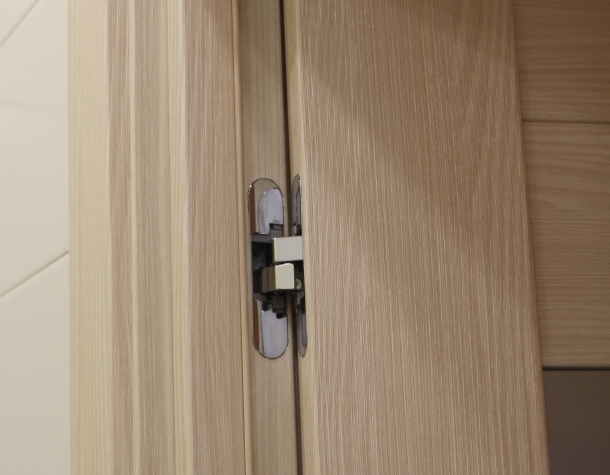
Secrets of installation, or why the same doors after installation look different
It all depends on the type of installation and the type of molded products. Consider 4 common ways:
- Door leaf and platbands are in one plane;
- Application of aluminum box;
- The device of semicircular or flat platbands;
- Using telescopic moldings.
Installation of canvas and platbands at the same level is a fashionable trend, thanks to which entrance groups lose volume, become more refined and easier. A door made in a similar color with the wall, which is its continuation, looks especially impressive. To make the result even brighter, relief is made on the walls in the form of straight, wavy lines, ornaments that do not end at the junction with the door, but rather continue, and serve as an additional means of masking for it.

Aluminum box is another fashion trend. And here 2 design techniques are used:
- When the canvas is an independent object in the interior;
- The door is part of the wall.
Smooth, durable aluminum gives the model a modern look, and also takes care of the integrity of the most vulnerable part of the door structure. But in this case, no matter how attractive the idea, it is not advisable to use it in the context of installing a door from an ecointerline interval. Why? - That's right, because of the price, and it will jump 4 times, no less.
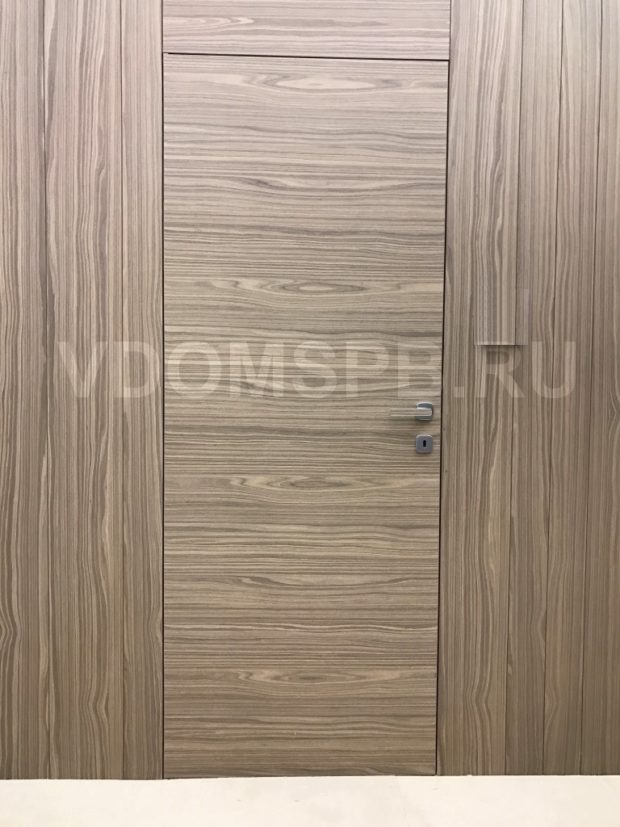
Which form of platbands to choose depends on the style:
- In the form of a semicircle: the result is a frame of a spherical shape. Such models, as well as drop-shaped, corrugated, profiled, with a capital, in the Greek style, are suitable for the classics. The upper and two vertical semicircular rungs are joined at an angle of 450;
- Flat platbands, as well as right-angle docking - for a modern look.
Platbands are made from the same MDF from which the canvas is made.
Sliding structures
There are several types of sliding structures. Some are simple, common and inexpensive, which means they are most suitable for doors of a low price segment. Others are complex, on expensive hardware with flush mounting. This category includes Invisible systems, roto doors, books. These are practically not used when installing doors from eco-veneer - as a rule, they accompany interior doors made of solid wood, natural veneer, belonging to the expensive segment, because they cost a lot and contribute to the cost of the model.

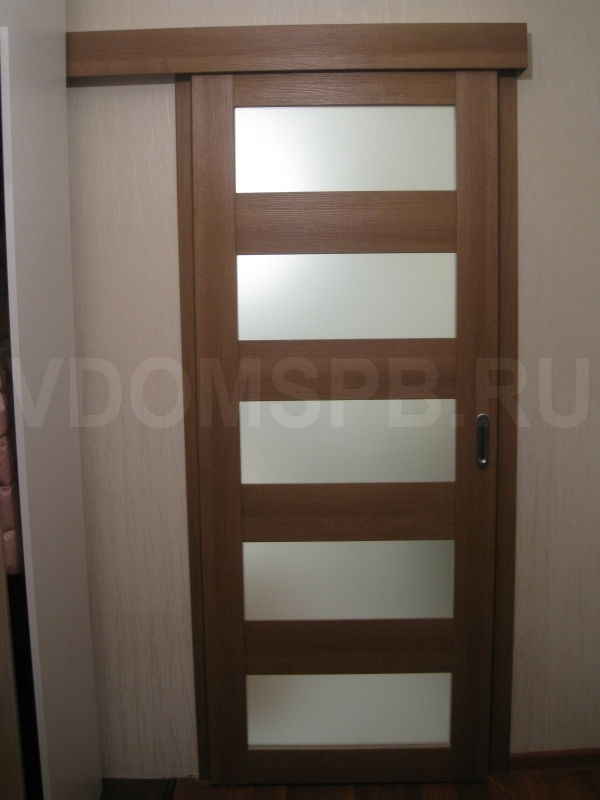
In general, sliding doors, no matter how beautiful they are, are designed to make up for the shortcomings of swing doors. We will not address the controversial issue of saving square meters, especially in this case we are talking more about a few centimeters. But the fact that the sliding system in the open form does not block access to the next room, does not slam from the draft, does not injure the child’s hand when he decides to play with the door - it's hard to argue with that.
They have their own negative aspects, for example, the canvas cannot be simply pushed when the hands are busy. They do not have a seal that protects against external noise. Nevertheless, experts believe that the main drawback of sliding doors is subjective. Their popularity is small because people are not used to such an opening system. Yes, and the roller mechanism, consisting of rollers, two guides and brackets for mounting them to the wall, does not always give a 100% guarantee of perfect operation. Although, in an aesthetic plan, a room decorated with a wide sliding door made of eco-veneer with excellent imitation of mahogany or oak undoubtedly only wins.
Can I install a door from eco-veneer to the bathroom?
Yes you can. Moreover, eco-friendly veneer for the bathroom - one of the most suitable options, and for this he has three prerequisites:
- Its layering;
- The presence of an absolutely hydrophobic polymer;
- Special technology for pasting parts.
The eco-veneer is obtained by repeated pressing of two components:
- Wood waste;
- Decorative polymer.
The surface is coated with a protective varnish. This processing technology guarantees high door strength and water resistance. Of course, the edges are the most vulnerable part of the canvas. Left uncovered, they form a “bridge” for moisture and dirt to penetrate. Manufacturers have learned to deal with this shortcoming. The fact is that with such models the collet with stand-ups are made without any edges at all, or rather, all parts are wrapped with an ecointerline to be joined, and they are removed into joints from the inside. Thus, water has no chance to seep into the thickness of the canvas, yes, and the film itself does not peel off over time.
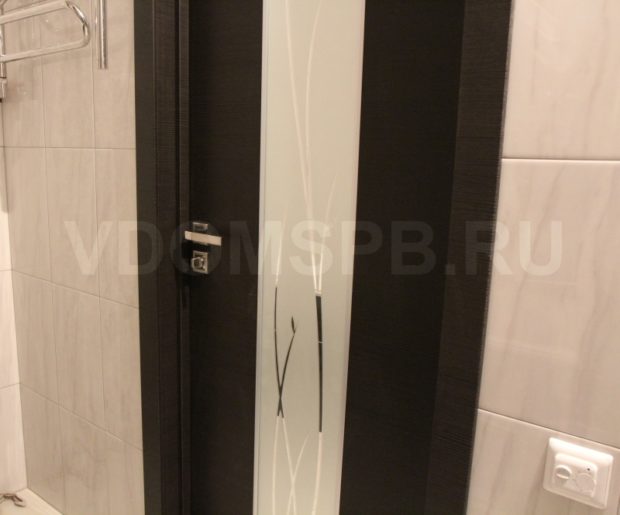
Of course, other types of doors are also processed so carefully that they are not afraid of high humidity, but they are all in a different "price" category, and this is another story.
As for the design, all the previously listed types of structures - both panel and drawer ones, including glass, are suitable for the bathroom.Try to choose a model of the appropriate style and color, because the manufacturer has already taken care of moisture resistance.
Eco-veneer or laminated - which material is better?
We already touched on this issue a bit when we talked about the types of design and designs of interior doors made of eco-veneer. Nevertheless, attention should be paid to this issue. As observations have shown, most buyers are absolutely far from the topic of choice. When the seller talks about this or that design, the words “from PVC”, “from veneer”, “from eco-veneer” for many sound equally meaningless. To be able to differentiate, you need to know the properties of each material, the level of its interaction with the environment and design capabilities.
So, on one side of the scale we have an ecointerline interval, on the other - laminated.
Laminate
The material is the next generation of familiar laminate flooring. Take texture paper with a thickness of not more than 0.8 mm, impregnate with synthetic resin, adhere to the surface, carry out additional processing with protective compounds - in most cases, varnish.
Although manufacturers present this type of door as durable and water resistant, in fact their praise is not enough. Paper - there is paper, although tarred, therefore, if compared with doors from an ecointerline interval, then:
- Less strength: scratching the canvas is really easy;
- Minus moisture resistance;
- The expressiveness of the design is negative: the laminate is also produced in different colors, but the cheap laminate flooring can be seen immediately - by the lack of a clear texture, by the repeating pattern, and the richness, beauty of the color are not discussed;
- Less silence: inside the hollow panel doors there is honeycomb cardboard, and this is the worst material for strengthening strength and creating insulation.
Laminated doors make up the category of “economy” models, the price of some does not even reach 2,000 rubles. What is it: minus or plus - you decide.
Doors made of eco-veneer or PVC: which one to buy?
How many people - so many opinions: the expression is very relevant for comparing two materials - eco-veneer and PVC. If you do not go into subtleties, there is no difference, i.e., in general, no. Both materials are synthetic films, both waterproof, are available in a rich palette of colors and textures.
It is believed that the prerequisite for creating an eco-veneer was ... expensive doors from Italy, which appeared on the Russian market about 10-12 years ago. The high cost of models made our manufacturers think and find a middle ground. As a result, a material was invented with similar characteristics as PVC, but it did not contain chloride, phenols, and other chemicals. With a clear conscience, the developers, spurred by marketers, pulled the fashionable prefix “eco” to the well-known name “veneer”. It turned out what was expected: doors of a low price segment, not inferior in design to models from Italy.
Of course, this gave rise to a new legend about the harmfulness of PVC doors - slogans about its toxicity and health damage came into play. It was also possible to find out that the eco-veneer does not react to aggressive chemistry, does not lose color even when exposed solvents, for example, the widespread White Spirit.
Meanwhile, PVC doors are not inferior in popularity to their "eco" brother:
- They have about the same price;
- They are painted in all RAL colors;
- They are covered with doors that are identical in design - in the model lines of manufacturers there are panel, drawer, molded doors made of eco-veneer and PVC;
- They are selected for any style;
- Can be installed in rooms with high humidity.
The only minus of PVC doors - the film with the constant exposure to powerful ultraviolet radiation can burn out, and in extreme heat emits an unpleasant chemical smell. But you just need to choose the right installation location, and two related models are equalized in characteristics.
Well, and another opinion, which can not be ignored: some believe that if there are film products in the interior, it takes on a cheap look. If this does not suit you, it is better to choose painted doors from MDF.
Eco-veneer and PP (polypropylene) - the same thing, or not?
The safety of polypropylene has made it the # 1 synthetic material in Europe. Greenpeace dubbed it the "resource of the future." It is thinner than PVC, in terms of external and tactile indicators it is very close to natural veneer and solid wood. For the design of the paintings, a variety of decors are used with a rich deep shade, including matte, silky, glossy embossing, as well as modern 3D voluminous effects - all this can be seen on the doors with PP coating.
The film looks great in plentiful artificial lighting, and every time when the angle of the light flux changes, it becomes different, changes its hue, becomes deeper. In technological terms, PP has two indisputable advantages:
- Ultraviolet does not act on her, her condition remains unchanged even at a temperature of 150 degrees;
- The small thickness allows you to accurately simulate the pattern of natural wood, which means that in the design it is not much, but still beats PVC.
And now the main thing - which is better: eco-veneer or software? The answer lies in the composition. The fact is that under the eco-veneer lies the so-called Continious Pressure Laminates (shortly CPL), which means multilayer polypropylene material. Those. eco-veneer is also polypropylene, but with the addition of cellulose fibers, modifiers, synthetic binders and adhesive. The eco-veneer was not subjected to an attempt to standardize, therefore, there are a great many other names for this coating on the market, for example, Nanotex, ultra-veneer, etc. Whatever it is called, the eco-veneer is essentially the same polypropylene, which means we are unlikely to find them cardinal differences, exactly as in the doors covered with these types of films.
Doors veneered or veneered: competitors or not?
It should be noted that the main condition for comparing veneered and eco-veneered doors should be the impeccable quality of both. Otherwise, no classifications and comparisons make sense.
Now we know for certain that the eco-veneer, except for the common root, has nothing to do with natural veneer, unless, of course, we draw parallels in such subjective indicators as the method of supply (both films are sold in rolls) and purpose (for decorative coating doors, furniture).
In terms of subordination, natural veneer is one step, or even two, higher. Like it or not, and synthetics, even the most spectacular, can not be compared with a natural analogue. Compared to the eco-veneer, natural is a prototype, it is not an ingot, but a large bill, not a bargaining chip, not an aristocrat, but not a lower class.
The question is, why then do you need an eco-veneer? This has already been said earlier: initially, the developers pursued the goal - make beautiful doors accessible to all. The only way to achieve this is to reduce the cost of the material. That eco-veneer came up in all respects. To an uninformed person it is almost impossible to distinguish one from another. Differences still exist:
- If you want an exclusive one - take natural veneer, because this is a tree, or rather, its thin section, and therefore the surface pattern will be unique, with only its characteristic texture. Eco-veneer is a mass product, because similarities are inevitable;
- Frame - in natural ones it is more durable, consisting of an array of conifers. Such a door is heavier, stronger, more reliable. At the eco-veneer, everything is done according to the economy option, which means that in the cheapest products cellular filling of voids and inexpensive chipboard are allowed;
- Wood and film in the interior form a different aura: if the former cares more about status and beauty, then the latter more about practicality, moisture resistance.
In the plus column, it should be indicated that the doors from the eco-veneer of the same series always have the same color and texture. You installed, for example, a door to the kitchen, and after a couple of months you decided to make the same in the bathroom and bathroom. The models that will be brought to you will be exactly like the first. In the case of natural veneer, this is also possible, but it is likely that the products will differ in shade.
So, they choose eco-veneers if they want beauty, but do not have enough money to install doors made of natural veneer, especially an array. In this case, scolding manufacturers for plagiarism is hardly appropriate, because, judging by the growing sales of veneered doors, good intentions are fully justified. And there is no question of slipping squalor. On the contrary, doors made of eco-veneer are a solid category of products that enter the interiors with any style, presented in a rich variety of colors, with a perfectly tailored texture, and most importantly - with an affordable price.
Conclusion
We hope our article was useful and we were able to answer your questions. If in doubt, you can always contact the staff of the online store of interior doors vdomspb.ru for advice.

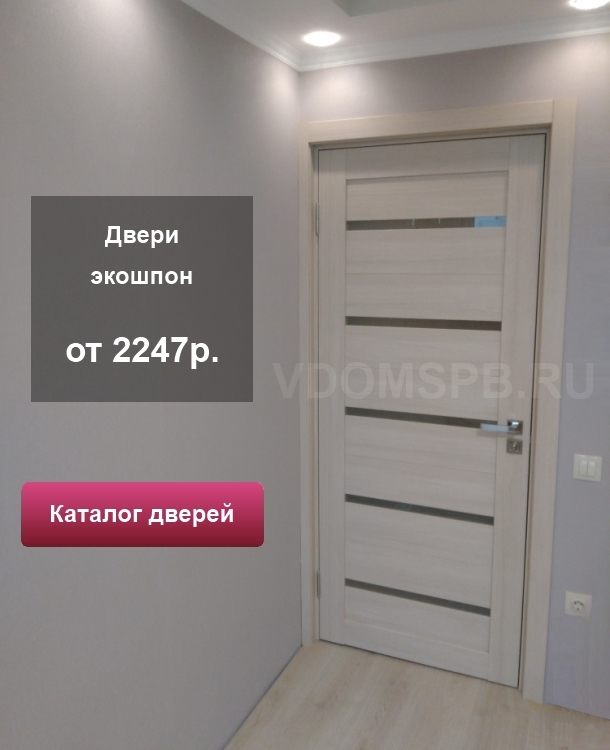

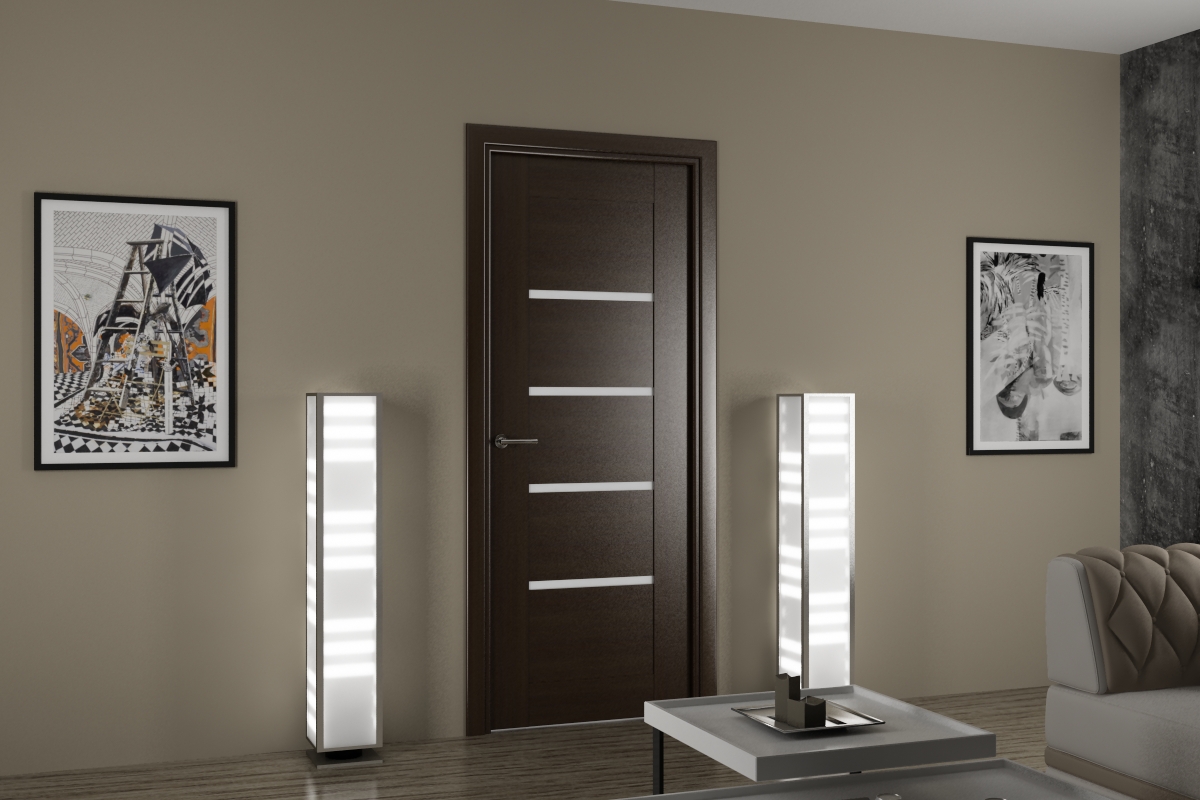
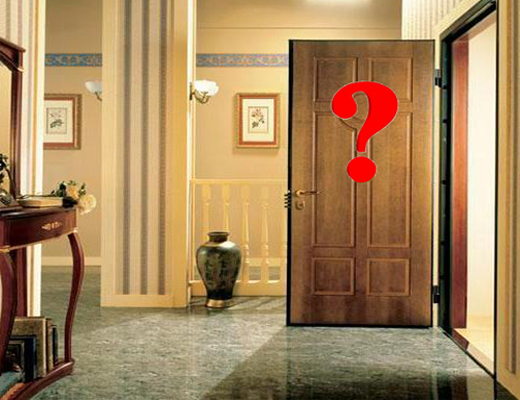
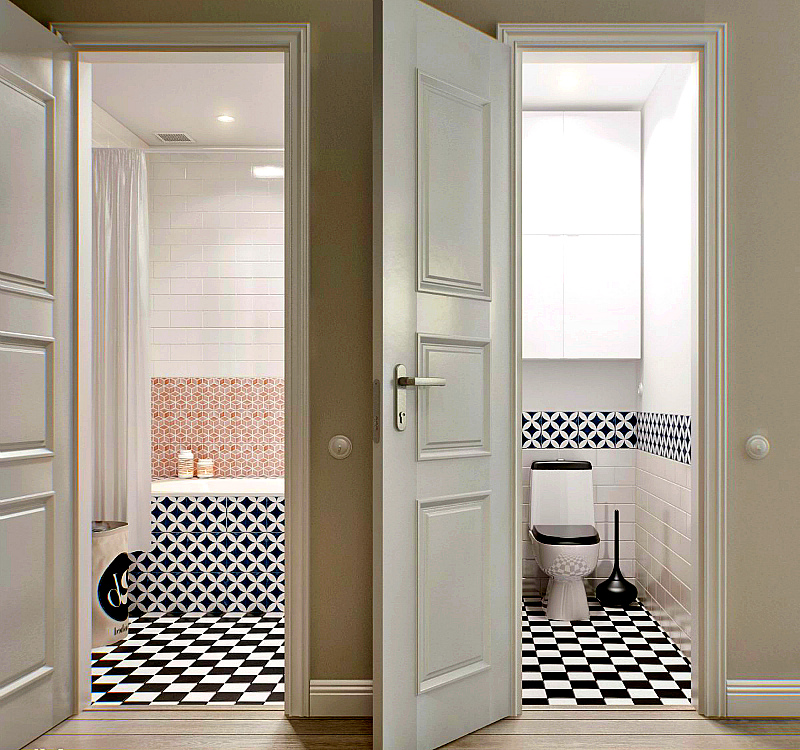
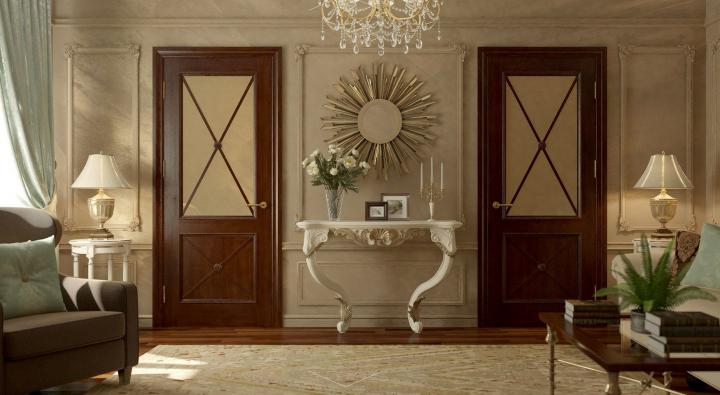
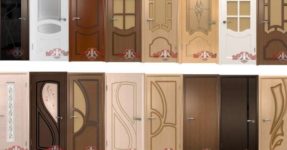
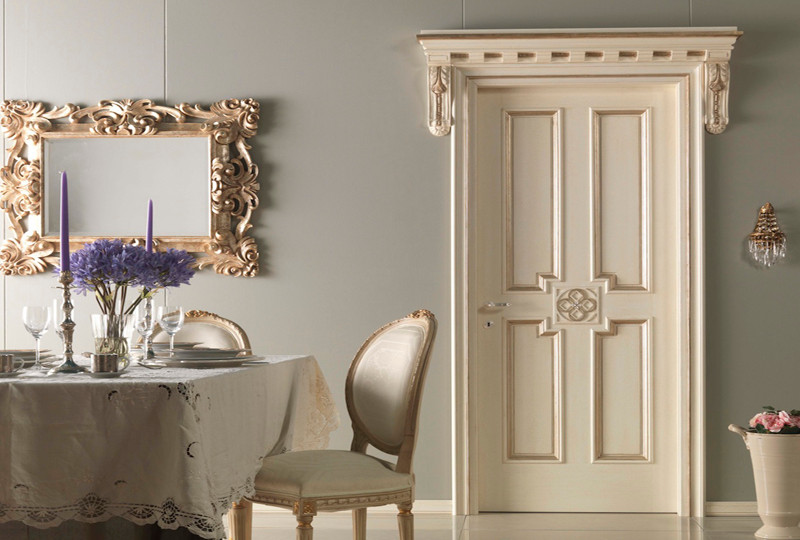
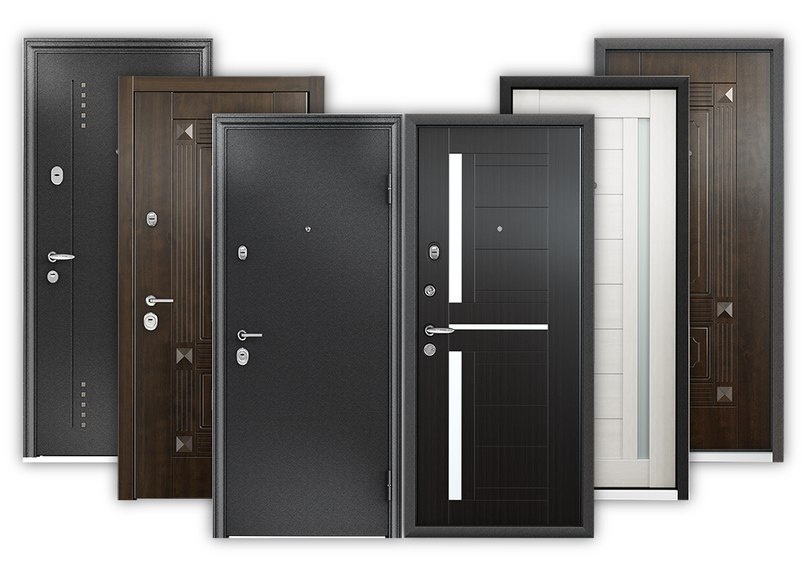

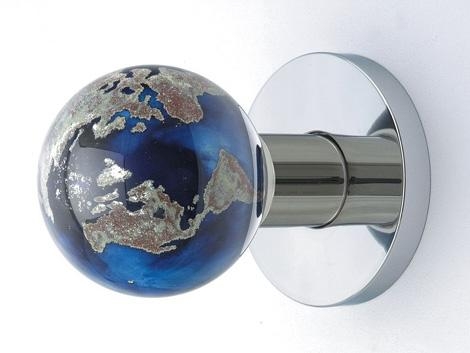
Undoubtedly, they did not come up with anything better than natural wood, but the ecointerline interval is an excellent economical version of the material for doors. A variety of design decisions will be a nice bonus.
I finally did not see that !!! it's cool !!